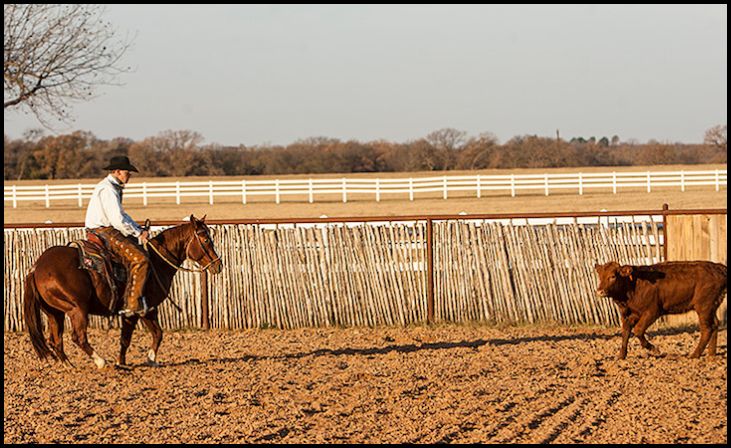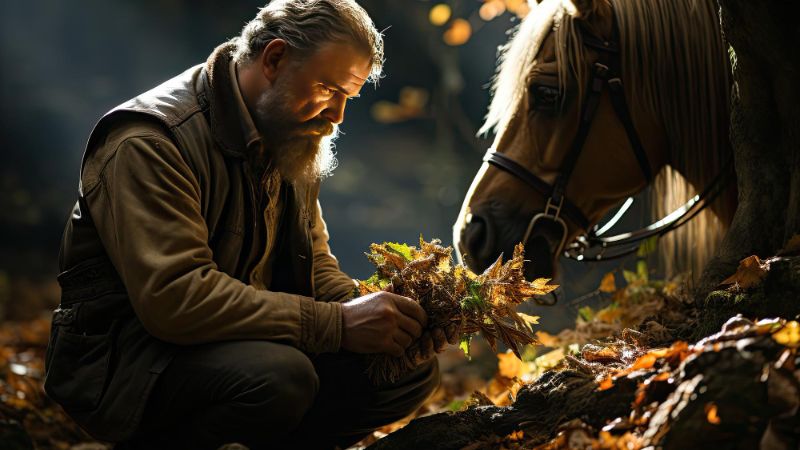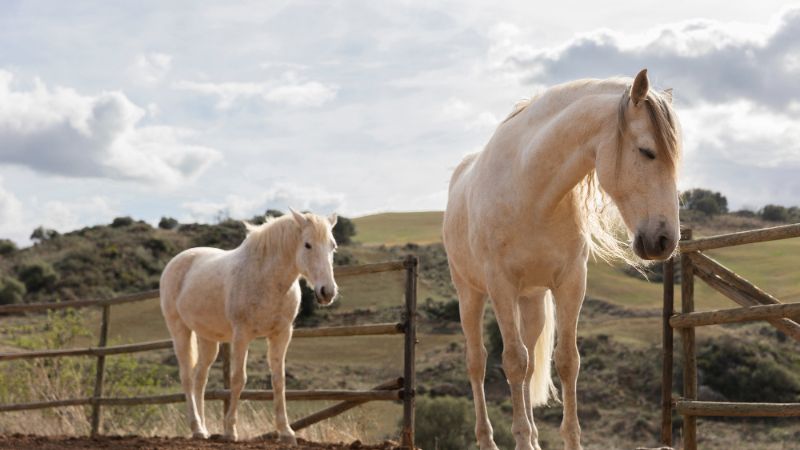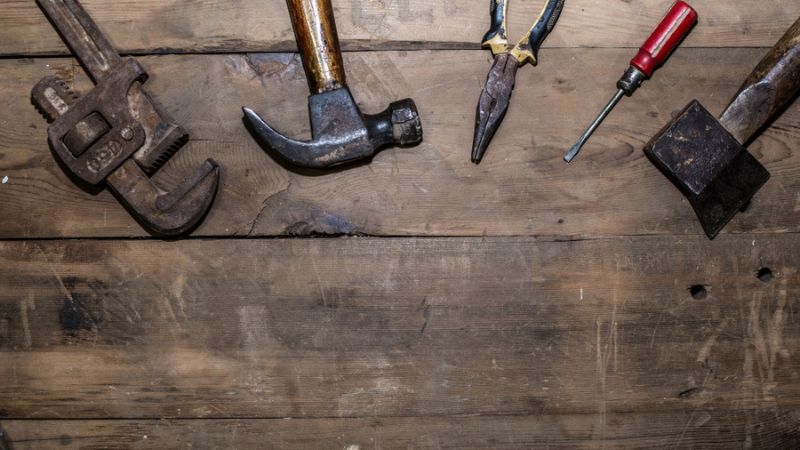How To Develop a Strong Bond With Your Cutting Horse – Building a strong bond with your cutting horse is not just about enhancing performance in the arena; it’s about fostering a relationship built on trust, communication, and mutual respect. As a vital partner in the sport of cutting, your horse relies on you not only for guidance but also for emotional support and companionship. Understanding the unique characteristics and instincts of cutting horses is fundamental to developing a meaningful connection.
In this guide, we’ll explore the essential elements of forging a strong bond with your equine companion, from establishing yourself as a leader to communicating effectively through cues and signals. We’ll delve into training techniques that prioritize positive reinforcement and cater to your horse’s individual needs, emphasizing patience and consistency throughout.
Moreover, we’ll highlight the importance of spending quality time together, engaging in grooming sessions, and participating in activities beyond training to nurture the bond further. By embracing these principles, you’ll not only enhance your performance in the cutting arena but also cultivate a deep and rewarding partnership with your horse.
How To Develop a Strong Bond With Your Cutting Horse
Consistent Training:

Consistency in training involves establishing a regular schedule for working with your cutting horse. This means dedicating specific times each day or week for training sessions, whether it’s practicing cutting maneuvers or refining techniques. By sticking to a consistent routine, you create a predictable environment for your horse, which fosters trust and confidence in their interactions with you.
Also Read – The Importance of Proper Nutrition for Cutting Horses
Positive Reinforcement:
In order to promote the repetition of desired behaviors, positive reinforcement strategies entail rewarding them. This could include giving treats, offering praise, or providing physical affection when your horse responds correctly to your cues. By associating these rewards with their actions, your cutting horse learns to enjoy the training process and becomes more motivated to engage with you willingly.
Understanding Body Language:
Horses communicate primarily through body language, so developing an understanding of their signals is crucial for effective communication. Pay attention to subtle cues such as ear position, eye contact, and body posture to gauge your horse’s mood and intentions. By learning to interpret these signals accurately, you can respond appropriately and build a deeper level of trust and connection with your cutting horse.
Spending Quality Time:
Building a strong bond with your cutting horse requires more than just training sessions; it also involves spending quality time together outside of formal activities. Take the time to groom your horse, go for leisurely walks, or simply hang out in their stall or pasture. These moments of bonding help strengthen your relationship and allow your horse to associate your presence with feelings of comfort and security.
Clear Communication:

Effective communication is essential for building trust and cooperation with your cutting horse. Use clear, consistent cues to convey your expectations and intentions during training sessions. Whether it’s through verbal commands, body language, or rein aids, ensure that your signals are easily understood by your horse. Consistent communication fosters mutual understanding and helps establish a solid foundation for your partnership.
Building Trust:
Trust forms the cornerstone of any strong bond between a rider and their horse. Building trust involves earning your horse’s confidence through patient, consistent interactions and positive experiences. Engage in activities that promote trust, such as ground work exercises, obstacle desensitization, and trail rides. By gradually exposing your horse to new experiences in a controlled environment, you demonstrate your reliability as a leader and strengthen the bond of trust between you.
Listening to Your Horse:
Effective communication is a two-way street, and it’s essential to listen to your horse as much as you ask them to listen to you. Pay attention to their reactions and responses during training sessions, and be responsive to their needs and preferences. If your horse seems uncomfortable or resistant, take a step back and reassess your approach. By being attuned to your horse’s cues, you can build a relationship based on mutual respect and understanding.
Variety in Training:
Keep training sessions interesting and engaging by incorporating a variety of exercises and activities. This prevents both you and your horse from becoming bored or complacent and encourages continued growth and development. Mix up your routines with different cutting maneuvers, ground work exercises, and trail rides to keep your horse mentally stimulated and physically fit. Variety not only helps reinforce your training but also strengthens the bond between you and your cutting horse through shared experiences and challenges.
Patience and Understanding:
Developing a close relationship with your cutting horse requires patience, understanding, and time. Every horse is different, having an own personality, set of advantages, and disadvantages. Be patient with your horse as they learn and grow, and understand that progress may come in small increments rather than giant leaps. Stay calm and composed, even in frustrating moments, and approach each training session with a positive mindset. By demonstrating patience and understanding, you create a supportive environment that encourages trust and mutual respect.
Enjoying the Journey:

Finally, remember to enjoy the journey of building a bond with your cutting horse. The partnership you develop with your horse is a special and rewarding experience, filled with moments of triumph, growth, and mutual understanding. Celebrate the successes, no matter how small, and cherish the time you spend together, whether it’s in the show ring, out on the trails, or simply hanging out in the barn. By embracing the journey with an open heart and a positive attitude, you’ll deepen your bond with your cutting horse and create memories that will last a lifetime.
Conclusion
In conclusion, developing a strong bond with your cutting horse is a journey marked by patience, understanding, and dedication. By prioritizing trust, communication, and respect, you’ll not only improve your performance in the arena but also cultivate a fulfilling relationship with your equine partner.
Celebrate every milestone, no matter how small, and continue to invest time and effort into nurturing this special connection. Remember, the bond you forge with your cutting horse extends far beyond competition—it’s a testament to the profound partnership between human and horse, built on mutual trust and unwavering support.
FAQs
How do I establish trust with my cutting horse?
Building trust starts with consistent and gentle handling. Spend time with your horse, engage in groundwork exercises, and communicate clearly to establish yourself as a reliable and trustworthy leader.
What role does communication play in bonding with my horse?
Effective communication is essential for developing a strong bond. Learn to read your horse’s body language, use clear cues and signals, and pay attention to their responses to ensure mutual understanding and trust.




